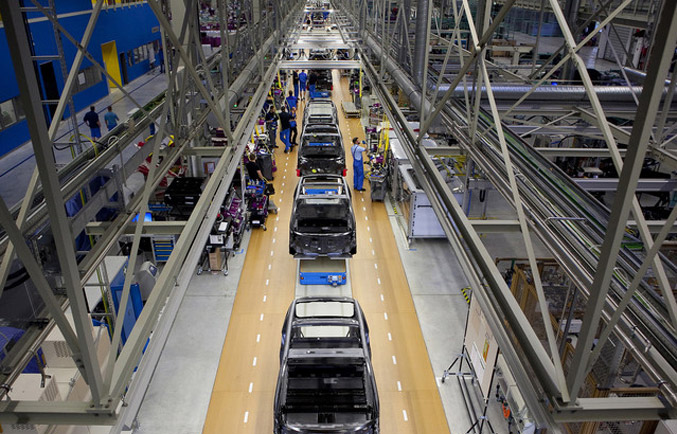
Vehicle manufacturing, in common with many other industries, relies on continuing innovations and new technologies to ensure that quality and efficiency remain of the highest standards.
Technology has played a critical role in improvements in the production line. In truth, the modern production line does not differ in some respects from the system famously pioneered by Henry Ford, in that vehicles arrive to workers at individual work stations and those workers are tasked with a specific job to do before moving the vehicle on until it has been finished. A key difference in efficiency terms is that platform sharing has become common, with different vehicles sharing common parts. As such, the different models can be rolled off the same assembly line, saving the vehicle manufacturers significant costs in the process.
Efficiency has also been delivered in terms of accuracy and measurement in the production of individual parts. For example, when it comes to transducer techniques, the measurement of parts is critically important. The Transducer Techniques® company specializes in torque sensors, load cells, and associated instrumentation, with each product line utilizing the latest in metal foil strain gauge technology. As such, the manufacturing process for these parts has to be very precise indeed.
So, some of the basic principles behind car manufacturing may remain the same, but the mechanization of tools has been one very notable change in recent times, with robot technology (and by extension, the use of lasers) coming increasingly into play. Robots carry out some of the tasks that human autoworkers were once asked to do and although this does have an effect in terms of job numbers; the cost of making a vehicle has tended to fall.
Another key issue in modern vehicle manufacturing is environmental considerations. The use of lighter materials in production has meant that vehicles have become more fuel efficient, but manufacturers have also worked to improve the efficiency of production lines in terms of how much material is used, thus reducing their eco footprint. Recycling systems have also been put in place. In the future, 3D printing may come to have a critical role to play in vehicle manufacturing. The material needed – ABS filament being one example – is cheaper than the aluminum and carbon fiber materials currently used; and both of those are more difficult to shape into free forms. If a part were to break, a replacement could be printed out in a matter of minutes. In addition, the material is much lighter and the use of lighter materials has been a critical development in vehicle manufacturing innovations over the years. Another less obvious trend that may impact positively on vehicle manufacturing is the trend for big data, allowing manufacturers to accumulate vast amounts of information into a single package for analysis purposes, thus saving on costs.
Innovations and technologies that have not even been dreamt of yet are sure to make vehicle manufacturing an exciting industry to work in well into the future.
Previous article
Outdoor toys for Winter 2014